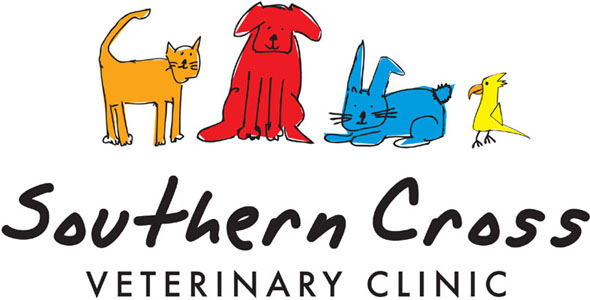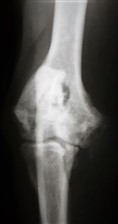

Spotlight on…Elbow Dysplasia
What is Elbow Dysplasia?
Elbow dysplasia is a skeletal condition affecting the elbow joint. This condition arises from abnormal growth and development of the bony structures that form part of the elbow joint. There are three bones that come together to form the elbow joint: the radius, ulna, and humerus. If these bones don’t fit together properly because of abnormal growth, the elbow joint is subject to abnormal forces. This results in loss of function and pain. It can also lead to fractures and the development of secondary conditions such as osteoarthritis. This skeletal condition is a common cause of forelimb lameness in young dogs, and it is a condition that worsens as the dog grows and matures, since the malformation of the joint leads to degeneration, and this leads to an increase in pain. Primarily a genetic disease, elbow dysplasia is commonly seen in large and giant breed dogs, such as as Labrador Retrievers, Golden Retrievers, German Shepherd Dogs, Rottweilers, Newfoundlands, Bearded Collies, Chow Chows, and Bernese Mountain Dogs.
What are the signs and symptoms of Elbow Dysplasia?
There are a number of signs and symptoms you can look out for if you suspect that your pet might have elbow dysplasia. These include:
·Forelimb lameness, intermittent or persistent - this tends to get worse following exercise
·Unusual gait
·Reluctance to play or go for a walk
·Difficulty getting up
·Stiffness of the forelimb after resting
·Swelling of the elbow joint
·Pain or discomfort on extension or flexion of the elbow
·Decreased range of motion of the elbow joint
If you recognise any of these signs and symptoms, please take your pet to the vet for a check.
How is Elbow Dysplasia diagnosed?
Your vet will begin by taking a history, and then will conduct a physical examination of your dog. X-rays will be taken so that your vet can see the bony structures. Your vet will check for open growth plates, conformational abnormalities, and the presence of bony fragments that could be causing a problem. Depending on what you vet finds, she may recommend further diagnostic tests, which might include an MRI or using a needle and syringe to take a sample of the fluid from the elbow joint.
What treatments are available? How will treatment help my dog?
Once your vet has made a diagnosis, the next step is treatment. Treatment will vary depending on the severity of your dog’s condition, and a range of options are available, both surgical and non-surgical.
The non-surgical options include management of the symptoms using non-steroidal anti-inflammatory drugs, joint supplements and weight control. The aim here is to decrease pain and inflammation, and to promote joint health. Besides such basic management, your vet will advise you on more rehabilitative activities, like acupuncture, laser therapy, physical rehabilitation, stem cell therapy, and how to exercise in just the right way so as to give them the best life possible. Your dog’s diagnosis is just the beginning! These therapies long term will help most dogs to go on and live tail waggingly good lives! Your dog’s prognosis will depend on her age, overall health, and the severity of the elbow dysplasia.
In cases of severe elbow dysplasia surgical treatment may be required. Such surgical treatment will depend on the conformation of the elbow joint and the specific pathological conditions involved. Your vet will take you through the options and refer you to the appropriate specialist where necessary.
back to Pet Info
back to Home
What is Elbow Dysplasia?
Elbow dysplasia is a skeletal condition affecting the elbow joint. This condition arises from abnormal growth and development of the bony structures that form part of the elbow joint. There are three bones that come together to form the elbow joint: the radius, ulna, and humerus. If these bones don’t fit together properly because of abnormal growth, the elbow joint is subject to abnormal forces. This results in loss of function and pain. It can also lead to fractures and the development of secondary conditions such as osteoarthritis. This skeletal condition is a common cause of forelimb lameness in young dogs, and it is a condition that worsens as the dog grows and matures, since the malformation of the joint leads to degeneration, and this leads to an increase in pain. Primarily a genetic disease, elbow dysplasia is commonly seen in large and giant breed dogs, such as as Labrador Retrievers, Golden Retrievers, German Shepherd Dogs, Rottweilers, Newfoundlands, Bearded Collies, Chow Chows, and Bernese Mountain Dogs.
What are the signs and symptoms of Elbow Dysplasia?
There are a number of signs and symptoms you can look out for if you suspect that your pet might have elbow dysplasia. These include:
·Forelimb lameness, intermittent or persistent - this tends to get worse following exercise
·Unusual gait
·Reluctance to play or go for a walk
·Difficulty getting up
·Stiffness of the forelimb after resting
·Swelling of the elbow joint
·Pain or discomfort on extension or flexion of the elbow
·Decreased range of motion of the elbow joint
If you recognise any of these signs and symptoms, please take your pet to the vet for a check.
How is Elbow Dysplasia diagnosed?
Your vet will begin by taking a history, and then will conduct a physical examination of your dog. X-rays will be taken so that your vet can see the bony structures. Your vet will check for open growth plates, conformational abnormalities, and the presence of bony fragments that could be causing a problem. Depending on what you vet finds, she may recommend further diagnostic tests, which might include an MRI or using a needle and syringe to take a sample of the fluid from the elbow joint.
What treatments are available? How will treatment help my dog?
Once your vet has made a diagnosis, the next step is treatment. Treatment will vary depending on the severity of your dog’s condition, and a range of options are available, both surgical and non-surgical.
The non-surgical options include management of the symptoms using non-steroidal anti-inflammatory drugs, joint supplements and weight control. The aim here is to decrease pain and inflammation, and to promote joint health. Besides such basic management, your vet will advise you on more rehabilitative activities, like acupuncture, laser therapy, physical rehabilitation, stem cell therapy, and how to exercise in just the right way so as to give them the best life possible. Your dog’s diagnosis is just the beginning! These therapies long term will help most dogs to go on and live tail waggingly good lives! Your dog’s prognosis will depend on her age, overall health, and the severity of the elbow dysplasia.
In cases of severe elbow dysplasia surgical treatment may be required. Such surgical treatment will depend on the conformation of the elbow joint and the specific pathological conditions involved. Your vet will take you through the options and refer you to the appropriate specialist where necessary.
back to Pet Info
back to Home
